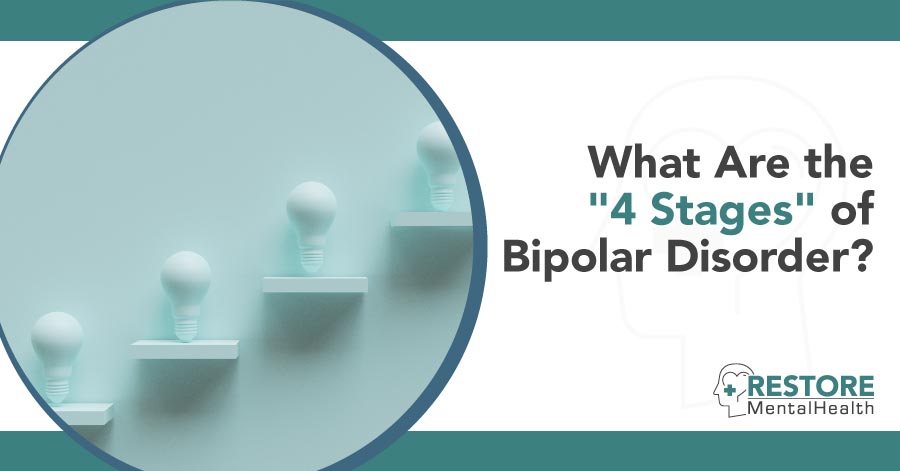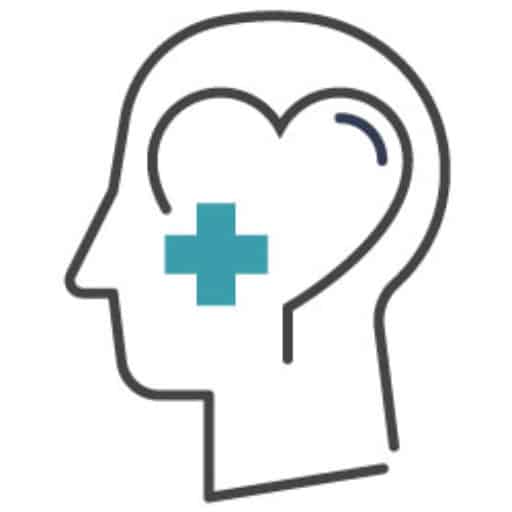The focus on bipolar disorder is often on the highs and lows, but there are definable stages of a typical bipolar cycle. Knowing what these stages are can help individuals understand what they’re going through, avoid triggers and manage their symptoms accordingly. Keep reading for a comprehensive overview of the four stages of bipolar disorder.
What Is Bipolar Disorder?
Bipolar disorder is a mental illness characterized by extreme mood swings, from depressive to manic states. People with bipolar disorder often have drastic shifts in energy, mood and behavior to the point that it becomes challenging to carry on with everyday life. The condition isn’t curable, but its symptoms are treatable with therapy and medication.
It’s estimated that 4.4% of American adults will experience bipolar disorder at some point in their life. The condition impacts men and women equally and typically develops between the ages of 15 and 19.
There are still a lot of stigma and misunderstandings around bipolar disorder, which can be very isolating for people with the illness. Many individuals think people with bipolar disorder are in two constant states: extreme depression and extreme mania. In reality, the condition tends to present itself in a cycle that includes four distinct bipolar stages.
The Four Stages of Bipolar Disorder
The four bipolar disorder phases are:
1. Mania
When someone is in the “mania” stage, it’s typically referred to as a manic episode. During these times, the person feels incredibly elevated and energized. They may seem incredibly happy or irritated and have a “buzzing” style of energy to them. Manic episodes often lead them to reckless behavior without considering long-term consequences. For example, someone going through mania may take out a new car loan even though they already have a car, engage in sexual activity outside their relationship or take a dangerous new drug for the first time.
Some symptoms of mania are:
- Increased self-esteem
- Lowered sleep needs
- High energy levels
- Intense sessions of creativity, often with ideas not making sense or linking together
- Intense happiness or extreme irritability
- Poor judgment and risky behavior
- Increased aggressiveness toward others
Mania lasts at least seven days in a row and often disrupts regular life, so the person in this stage can’t go to work, attend their usual events and responsibly take care of themselves or others.
In extreme situations, mania can trigger psychosis so that the person can’t tell the difference between reality and their perceived reality. In these situations, hospitalization may be required.
2. Hypomania
Hypomania, also known as acute mania, is the second of the manic stages in the bipolar disorder cycle. While both manic phases are similar, hypomania is the less extreme version of mania. Hypomania lasts at least four days in a row but still allows the individual to go about their everyday routine. The individual may have heightened energy levels and mood swings but can still function and go to work. To the outside world, someone going through hypomania may seem more cheerful, talkative, creative and willing to “have a good time.”
Individuals going through the mania and hypomania bipolar disorder stages often feel shame and regret for their actions or behavior, which brings them to the depressive phase of the bipolar cycle.
3. Depression
When someone experiences the phase of depression in the bipolar disorder cycle, it’s often an intense depressive state.
Someone is in the depressive stage when they experience at least five of the following symptoms, lasting for at least two weeks:
- Feelings of sadness and hopelessness
- Decreased self-worth
- Feeling extraordinary amounts of guilt
- Lack of energy
- Sleep issues
- Increased irritability
- Suicidal thoughts
- Having zero interest in any activities or passions
- Restlessness
- Noticeable weight loss or weight gain
During the depressed phase, bipolar individuals may isolate and keep to themselves until they get out of this stage.
4. Mixed Episodes
As it sounds, the mixed episodes phase is when an individual experiences symptoms of mania and depression simultaneously or back-to-back. This stage can feel confusing and tempestuous for both the bipolar individual and the people in their life.
Some possible symptoms of the mixed episode stage are:
- Feeling sad when engaging in favorite, pleasant activities
- Irritation
- Feelings of regret
- Low energy
The rough up-and-down combination of the mixed episodes phase can lead to an increased risk of self-harm and violence.
How Long Does Each Stage of the Bipolar Disorder Cycle Last?
The length of each phase is unique to each person. A study that followed bipolar patients for up to 25 years found that the average mood phase lasts 13 weeks.
Additionally, the cycle frequency can change over time. So, a person completing an entire cycle once a year might find themselves experiencing two full cycles the following year. Most bipolar individuals experience one to two complete cycles per year.
If a person goes through four or more full cycles in a 12-month period, they’re going through something called rapid cycling. One study found that 12–24% of individuals with bipolar disorder experience rapid cycling. This unique presentation of rapid cycling in bipolar disorder is most common in:
- Women
- Individuals who had an earlier onset of their bipolar disorder
- Those with a higher-than-average treatment resistance
Relief for Bipolar Disorder
While there isn’t a “cure” for bipolar disorder, the condition is highly treatable. People with bipolar disorder can live happy, regular and fulfilling lives with treatment. Most often, individuals will need to seek a combination of medication and therapy for the disease. Many types of medication are used to treat the symptoms of bipolar disorder, and their effectiveness can differ from patient to patient. As a result, it’s important for individuals to have an open mind and be willing to work with their doctor to find the right type and dosage that best suits their needs. Almost nine out of 10 patients report feeling satisfied with their current medication. And those who are happy with their treatment methods also report having a happier outlook on life overall.
Bipolar Disorder Treatment at Restore Mental Health
Restore Mental Health is a premium facility that helps individuals get the treatment they need for various mental health conditions, including bipolar disorder. Your illness doesn’t have to define or control you. Treatment can help you live a fulfilled, happy life with minimal impact from your bipolar symptoms. Contact Restore Mental Health today to find out how we can help by calling (877) 594-3566.



